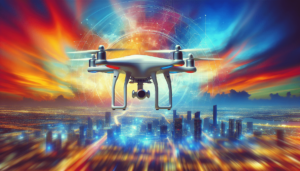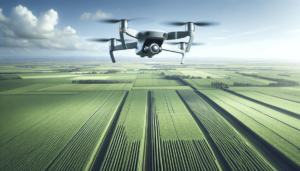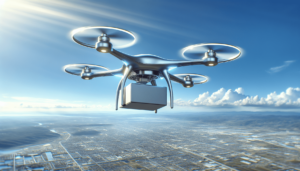Have you ever considered the transformational power that drones possess, particularly in the delivery of medical supplies to areas that are almost impossible to reach otherwise? Today, I intend to unravel the fascinating intersection between technology and healthcare, explaining how drone delivery systems are revolutionizing the distribution of essential medical supplies to the most inaccessible areas worldwide.
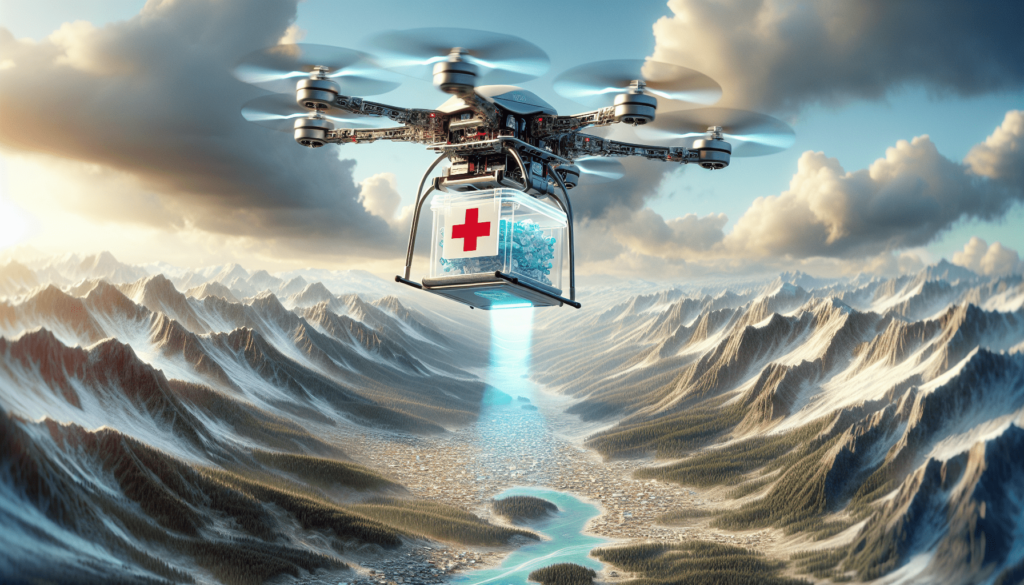
Introduction to Drone Delivery in Healthcare
Drones, initially seen as gadgets for enthusiasts or tools for military applications, are now taking on a crucial role in healthcare logistics. The advent of drone technology in medical supply chains marks a significant milestone. By navigating unmanned and circumventing barriers that conventional vehicles cannot, they are proving to be game-changers in reaching remote areas, particularly in regions with challenging terrains or a lack of infrastructure.
The Necessity of Drone Delivery
Consider scenarios where natural disasters have obliterated infrastructures or where geography itself poses insurmountable barriers. In these situations, traditional vehicular delivery becomes arduous or impossible. Here lies the need for drones: their ability to fly over obstacles, delivering medical supplies quickly and efficiently, is pivotal in saving lives and alleviating suffering.
Historical Context and Technological Evolution
The journey from the first rudimentary drone prototype to today’s advanced autonomous flying machines has been a testament to technological evolution. The early 20th century saw the birth of unmanned aerial vehicles (UAVs) primarily for military use. However, in the late 21st century, technological advancements coupled with increased demand for efficient logistics led to an exploration of civilian uses, notably in medical deliveries.
How Drone Delivery Works
For those unfamiliar with the intricacies of drone operations, understanding how these machines function can be as intriguing as appreciating their potential impact. Let me take you through the technical and operational frameworks.
Technical Specifications
Modern delivery drones are equipped with state-of-the-art technology. They boast GPS for navigation, sensors for obstacle detection, and high-capacity batteries for extended flight times. Additionally, many are designed with redundancy systems to ensure reliability, even in adverse conditions.
| Specification | Description |
|---|---|
| Power Source | High-capacity lithium batteries |
| Navigation System | GPS and inertial measurement units |
| Control Mechanism | Remote, autonomous, and semi-autonomous capabilities |
| Payload Capacity | Ranges from 1 kg to over 20 kg |
| Flight Range | Up to 100 kilometers or more, depending on design |
Operational Workflow
The operational process involves a series of well-coordinated steps. It starts at a distribution hub where medical supplies are securely packed into the drone. Once launched, the drone follows a pre-set GPS path to the destination. Upon reaching the target area, it may hover and release a package using a winch system or land and discharge its cargo. This entire process can happen autonomously, monitored by operators who intervene only when necessary.
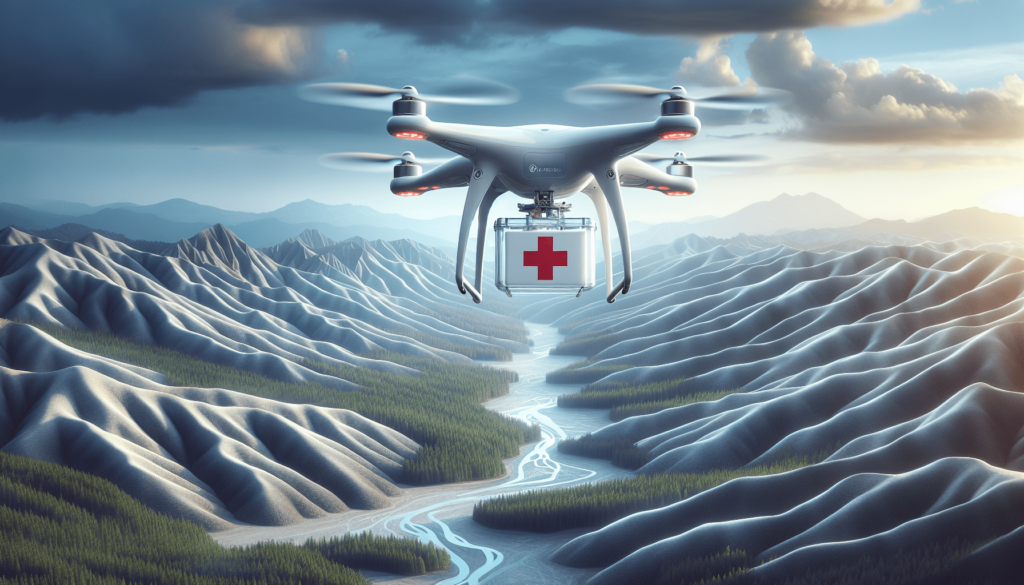
Reaching Hard-to-Access Areas
It might seem straightforward—drones fly and deliver—but operationalizing this in remote, hard-to-access areas presents unique challenges.
Identifying and Overcoming Challenges
- Geographical Barriers: Mountains, rivers, and forests can impede traditional transport. Drones can overfly these obstacles, offering an aerial delivery route devoid of such hindrances.
- Weather Conditions: Harsh weather can affect flight safety and efficiency. Fortunately, modern drones are equipped with technologies to withstand and adapt to varying climate conditions.
- Regulatory Hurdles: Different countries have varying regulations regarding airspace and autonomous vehicles. Navigating these regulations requires collaboration between governmental bodies and drone operators.
Case Studies and Examples
To highlight the effectiveness of drone delivery, consider Rwanda and Ghana—countries that have pioneered the deployment of drones for healthcare. Zipline, a drone delivery company, has been instrumental in delivering blood and vaccines to remote clinics within minutes, drastically reducing the time it would take via road.
Benefits of Drone Deliveries in Healthcare
The advantages of utilizing drones in medical deliveries extend beyond reaching inaccessible areas. They offer a new dimension to healthcare logistics, enhancing efficiency and effectiveness in several ways.
Speed and Efficiency
Drones can swiftly bypass traffic and terrain challenges, ensuring that critical supplies such as blood, vaccines, and medicines reach their destinations faster than conventional methods. This speed is crucial during emergencies, where time is of the essence.
Cost-Effectiveness
Although the initial investment in drone technology can be high, the long-term financial benefits are notable. Reduced transport costs, fewer delays, and minimal logistics infrastructure expenditure highlight drones as an economically viable option.
Sustainability and Reduced Carbon Footprint
Drones operate on electric propulsion systems, dramatically reducing carbon emissions compared to traditional gasoline-powered vehicles. This shift is part of a larger movement toward sustainable logistics solutions that contribute positively to environmental goals.
Ethical and Social Implications
As we marvel at the prowess of drone technology, it is essential to consider the ethical and social implications that accompany its deployment.
Privacy Concerns
Given that drones can capture images and data from the air, privacy concerns arise regarding how data is used and protected. Establishing robust data protection protocols is crucial to safeguard personal information and build public trust in drone operations.
Impact on Local Communities
Drone delivery systems can transform local healthcare accessibility, but it is imperative to engage communities in their deployment. Involving local stakeholders ensures that technology is tailored to meet the specific needs and cultures of the populations it serves.
Future Prospects and Innovations
The story of drones in healthcare logistics is still unfolding, with exciting prospects on the horizon. As technology progresses, possibilities expand beyond our current imagination.
Advanced Drone Capabilities
Future drones might feature enhanced AI for better navigation and decision-making, increased payload capacities, and extended flight ranges. The ambition is to develop drones that can autonomously adapt to changing conditions in real-time, optimizing route efficiency.
Integration with Broader Healthcare Systems
The integration of drones within larger healthcare systems could see them operating as part of a network that includes telemedicine and mobile clinics. This holistic approach could revolutionize how remote healthcare functions, improving outcomes for populations with limited access.
Conclusion
Reflecting on how far we have come, the role of drones in delivering medical supplies to the hardest-to-access areas is a remarkable blend of human ingenuity and compassion. It addresses a critical need, bridging the gaps between patients and the supplies that are literally life-saving.
As we look to the future, the continued evolution and integration of drone technology in healthcare promise not only improved delivery of medical supplies but also a more connected world where geographical barriers to healthcare are a thing of the past. Through a collective effort between technologists, healthcare providers, governments, and communities, drone delivery systems present a visionary step toward a more equitable global healthcare landscape.
